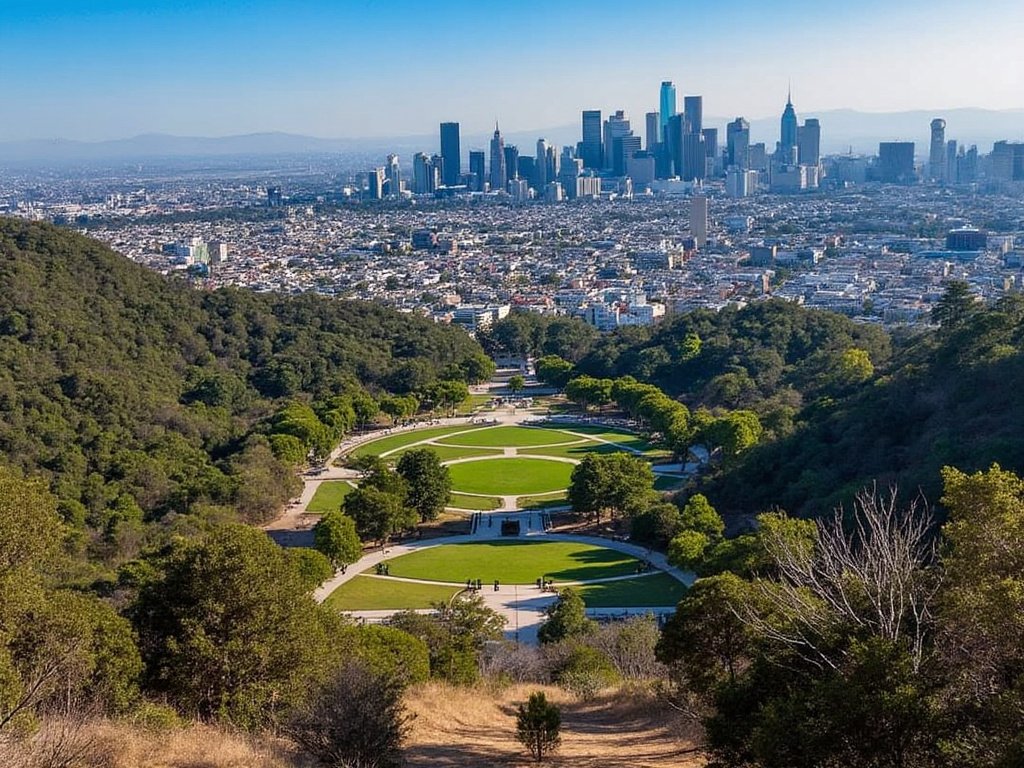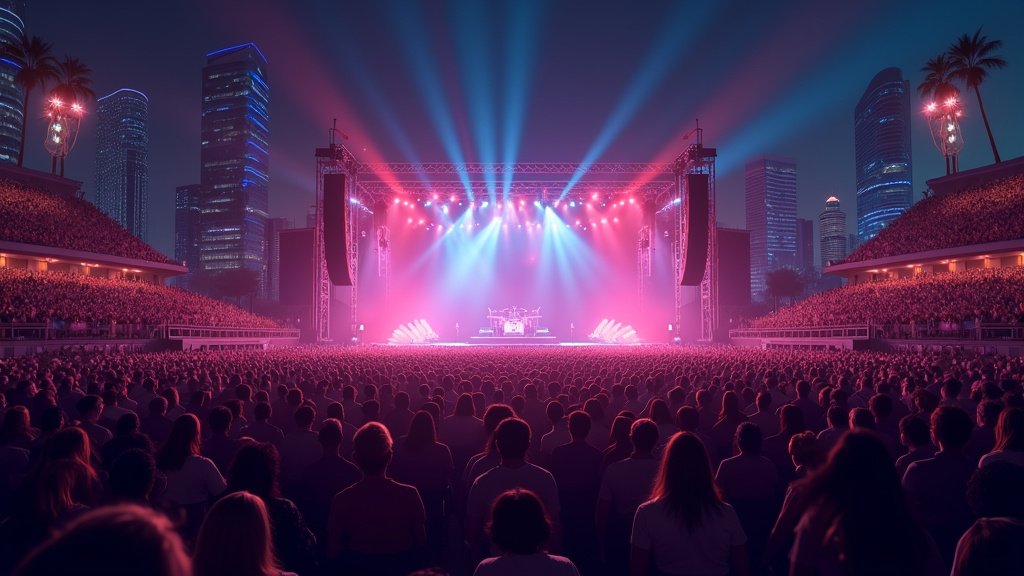Los Angeles, a city synonymous with its sprawling highways, shimmering beaches, and glittering nightlife, can often feel like a patchwork of contrasting identities. From the palm-lined boulevards of Beverly Hills to the colorful chaos of Downtown’s Fashion District, the city is a kaleidoscope of cultures, lifestyles, and landscapes. But amidst this vast urban sprawl, there is one unifying sanctuary—a green oasis nestled between concrete and canyon: Griffith Park. Often referred to as the Central Park of Los Angeles, Griffith Park is much more than a recreational space; it’s the living, breathing heart of the city.
Griffith Park sprawls over 4,300 acres, making it one of the largest urban parks in North America. It’s not just its size that sets it apart; it’s the way the park embodies the dual spirit of Los Angeles: the natural and the constructed, the tranquil and the chaotic. Whether you’re a lifelong Angeleno or a first-time visitor, Griffith Park offers a unique lens through which to experience the city’s essence. It’s where the iconic Hollywood Sign peers down at sun-soaked trails, where the Griffith Observatory ignites imaginations with its star-studded views, and where coyotes roam freely, reminding us of the wild side of urban life.
But to understand why Griffith Park is so vital to Los Angeles, we must delve into its history, its present-day significance, and its role as a cultural and environmental cornerstone.
The Park’s Roots: A Gift of Vision and Controversy
The story of Griffith Park begins in the late 19th century with a man named Griffith J. Griffith. A Welsh immigrant who amassed a fortune in mining, Griffith purchased the land in 1882 with grand visions of creating a ranch and a leisure estate. But by 1896, after a series of personal and financial misfortunes, Griffith donated 3,015 acres of his land to the city of Los Angeles, proclaiming it a “Christmas gift” for the people. His vision? A public park that would offer Angelenos a place to escape the pressures of urban life.
Despite Griffith’s generosity, his legacy is complicated. In 1903, he was convicted of shooting his wife in a fit of paranoia, serving two years in prison. Though his later life was marked by scandal and infamy, the park retained his name—a testament to both the gift and the flawed man who gave it.
Over the decades, Griffith Park expanded its boundaries and its offerings. In the 1930s, the Works Progress Administration (WPA) added trails, fountains, and picnic areas, leaving an indelible mark on the park’s infrastructure. Today, Griffith Park is a tapestry of old and new, where rustic trails meet modern attractions.
A Playground for Everyone
What makes Griffith Park truly magical is its ability to cater to every type of visitor. For outdoor enthusiasts, the park is a hiker’s paradise. Trails like the Mount Hollywood Trail and the Brush Canyon Trail wind through chaparral-covered hills, offering panoramic views of the Los Angeles basin, the San Gabriel Mountains, and even the Pacific Ocean on clear days. For the more adventurous, a trek to the summit of Mount Lee provides an up-close encounter with the Hollywood Sign, one of the most recognized symbols in the world.
But the park isn’t just for hikers. Families flock to the Griffith Park Merry-Go-Round, a vintage carousel that has been delighting children since 1937. Train lovers of all ages can enjoy the Los Angeles Live Steamers Railroad Museum, which features miniature train rides and a glimpse into the city’s locomotive history. Meanwhile, equestrians can explore miles of bridle paths, and golfers can tee off at one of two 18-hole courses.
Griffith Park is also home to cultural landmarks that elevate it from a mere recreational space to a hub of intellectual and artistic exploration. The Griffith Observatory, perched atop Mount Hollywood, is a beacon for science enthusiasts. Opened in 1935, the observatory offers free public telescopes and exhibits that make astronomy accessible to all. Its sweeping terraces also provide one of the best vantage points for viewing the sunset over Los Angeles.
Another gem within the park is the Los Angeles Zoo and Botanical Gardens. Housing over 1,400 animals from around the globe, the zoo is not only a family-friendly attraction but also a leader in wildlife conservation. Nearby, the Autry Museum of the American West celebrates the history and culture of the West through art, artifacts, and storytelling.
Nature in the City
Griffith Park’s beauty lies not just in its amenities but in its untamed wilderness. While many urban parks are meticulously manicured, Griffith Park retains a rugged charm. Its native flora, including sagebrush, yucca, and oak trees, creates a landscape that is quintessentially Southern Californian. The park’s ecosystem is a haven for wildlife, including deer, bobcats, and more than 200 species of birds. Coyotes are perhaps the most iconic residents, often spotted trotting along trails or howling at dusk.
This wilderness is not without its challenges. Wildfires have periodically swept through the park, threatening its delicate ecosystems and testing the resilience of its wildlife. Climate change and urban encroachment also pose ongoing risks. Yet, Griffith Park endures as a vital green space in a city that sorely needs it.
A Cultural Icon
Griffith Park is not just a local treasure; it’s a global icon. Its landscapes have been immortalized in countless films and TV shows, from the dramatic dance sequences in La La Land to the brooding noir of Rebel Without a Cause. The park’s Greek Theatre, an outdoor amphitheater nestled among the hills, has hosted legendary performances by artists ranging from Elton John to Adele.
Even the park’s quirks have become part of its charm. The abandoned Old Los Angeles Zoo, with its eerie, graffiti-covered enclosures, has become a favorite spot for urban explorers and photographers. Meanwhile, the Bronson Caves, better known as the Batcave from the 1960s Batman TV series, remain a pilgrimage site for pop culture fans.
The Soul of a City
In a city often criticized for its car-centric culture and lack of communal spaces, Griffith Park stands as a symbol of what Los Angeles can be: a place where people from all walks of life can come together, connect with nature, and find a moment of peace. Whether it’s a jogger pounding the dirt trails, a couple picnicking under the shade of a sycamore, or a child marveling at the stars through a telescope, Griffith Park is where Los Angeles breathes.
It’s easy to think of Griffith Park as just another landmark in a city overflowing with them. But to do so is to miss the essence of its significance. It’s not just a park; it’s a microcosm of Los Angeles itself—a city that is as much about its people as its skyline, as much about its aspirations as its imperfections. Griffith Park, with its wild beauty and eclectic offerings, reminds us that amidst the chaos, there is always space to pause, to reflect, and to marvel.
For Angelenos, Griffith Park is more than a destination—it’s a part of who we are. And for visitors, it’s a glimpse into the soul of a city that is anything but ordinary.





